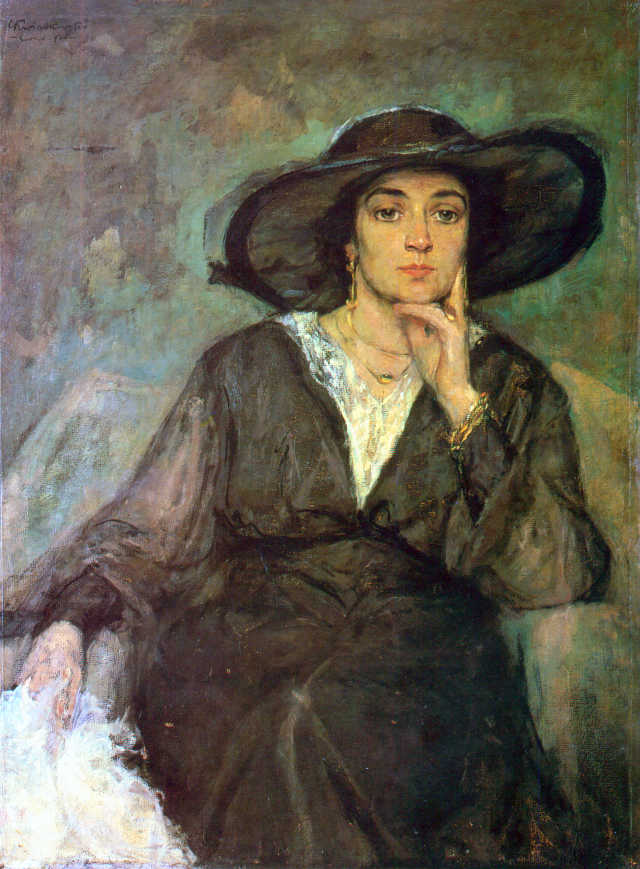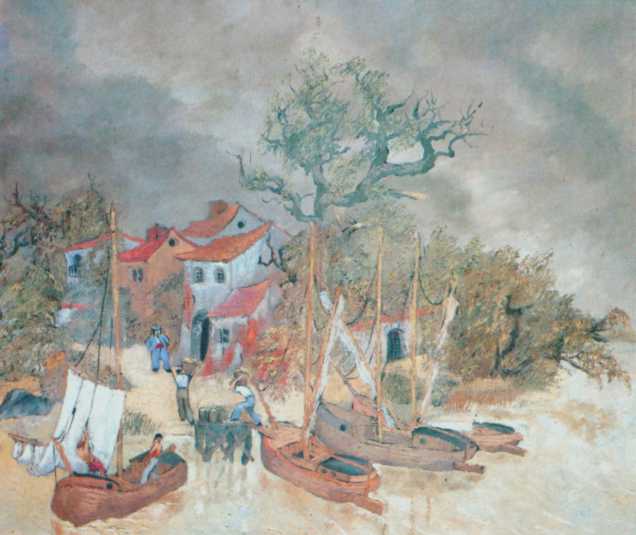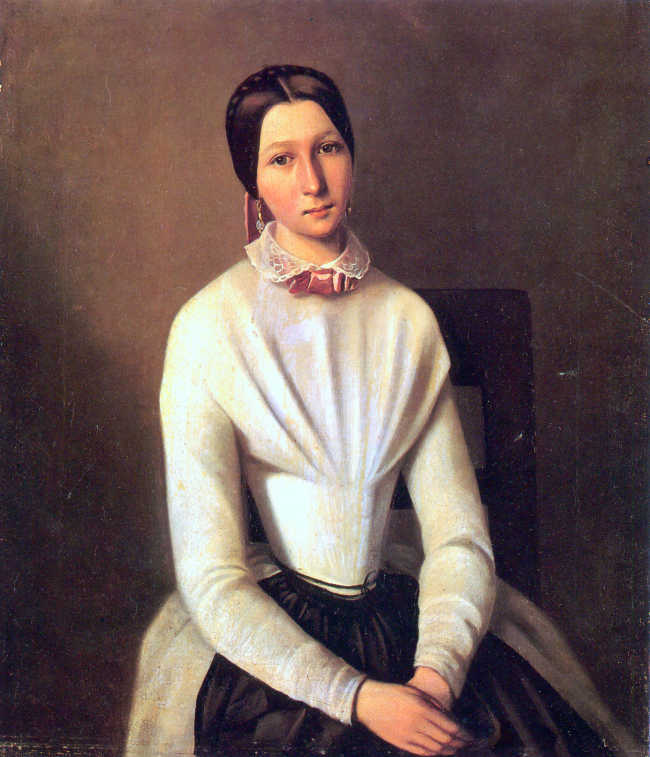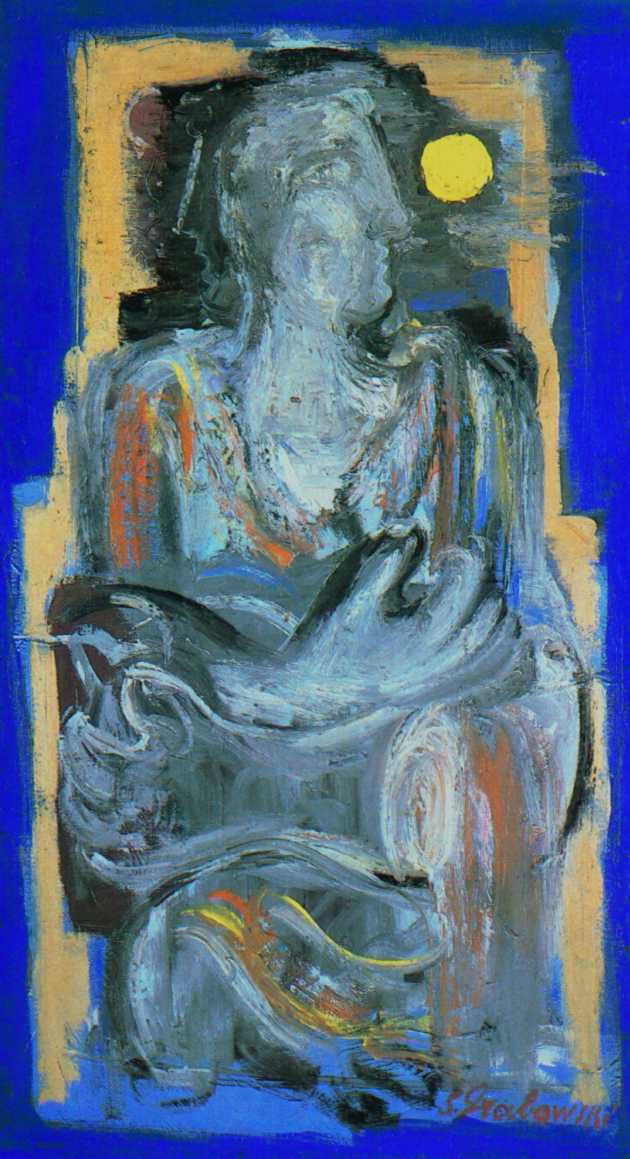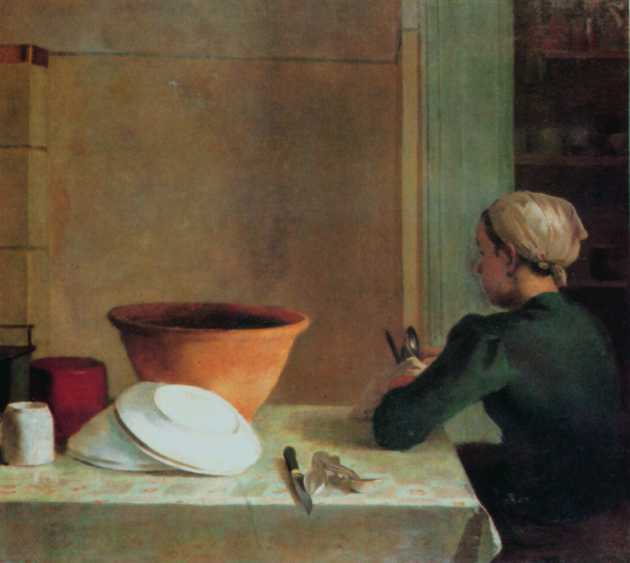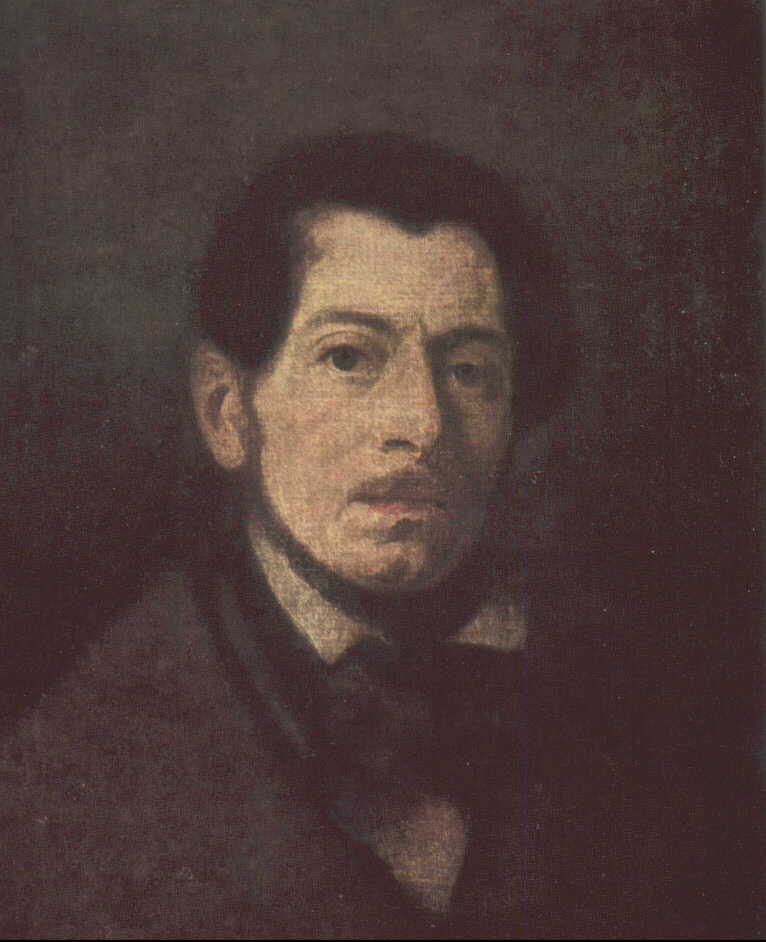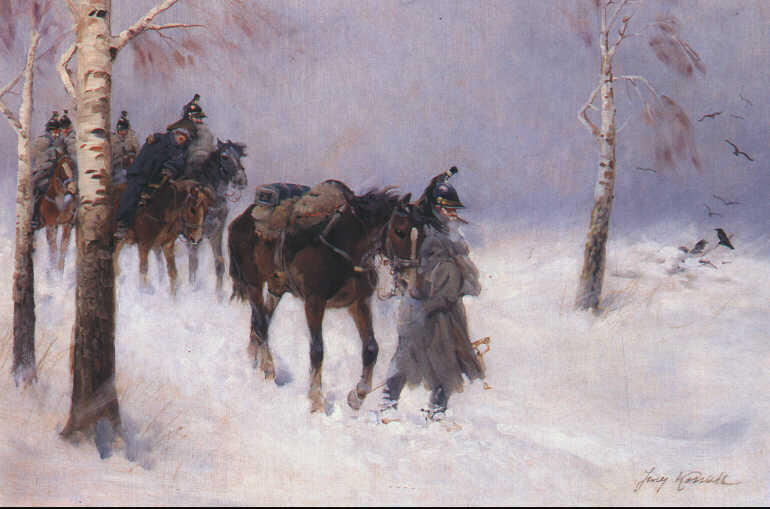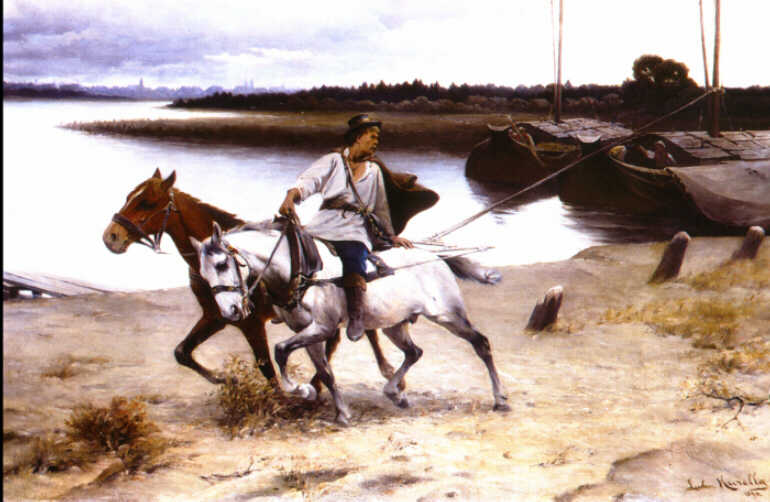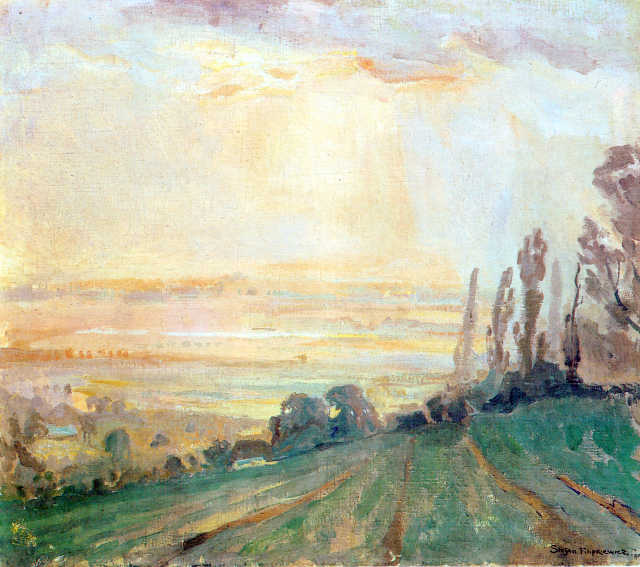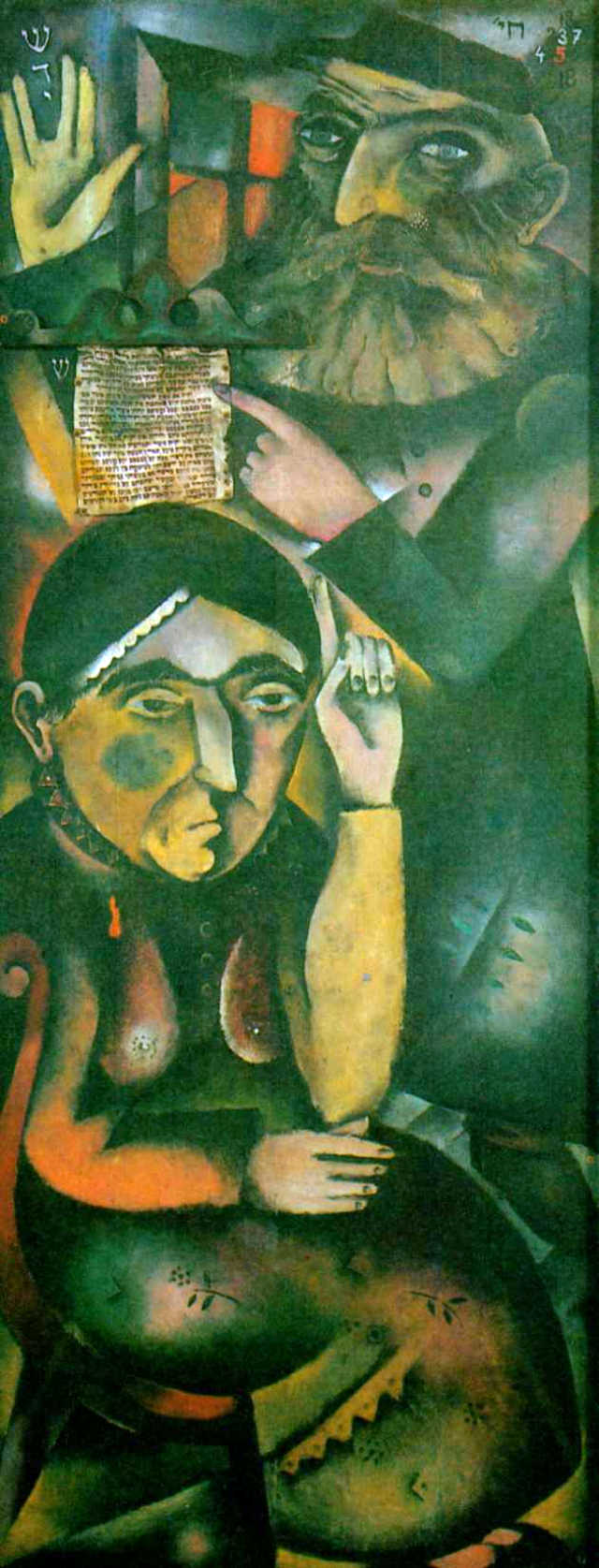One of the most outstanding Polish draftsmen and watercolors. Born 15 of December 1824 year in Wiśnicz, in the vicinity of Krakow. Soon the family moved to its own seat in Lviv. The conditions and path of the artist's life influenced the shaping of his work. In his youth, Kossak often stayed in the family estate, in the village of Kniehilin located near the San River. The artist's love of drawing was revealed during his studies at the Basilian Fathers' Gymnasium in Lviv and during his law studies at the University of Lviv.. Travels around Ukraine and Podolia had a great influence on the artist's interests. He held them in the years 1844-51 with a friend from studies, Count Kazimierz Dzieduszycki. During his stay in many noble and aristocratic residences in the Borderlands, he sketched the motives of interest to him for his own satisfaction, especially horses. He also often stayed in Jarociny – the property of the Dzieduszycki family, where was the largest stud of Arabian purebred horses in Galicia. He was self-taught, because he has not graduated from any art college. W 1851 Juliusz Kossak left for Petersburg. There, for the first time, he had the opportunity to get to know the masterpieces of world painting gathered in Russian collections. In years 1852-1855 he lived in Warsaw for several years, where he joined a group of young people, progressive artists, graduates of the Warsaw School of Fine Arts , entered the circles of the aristocratic bohemia. The next stage in the artist's life was his stay in Paris in the years 185 5-1860, where he collaborated with Horace Vernet, a loud painter, a battle painter, illustrator of the Napoleonic campaign. The works of the great masters provided them with many impulses, which he copied and studied at the Louvre. He conducted independent drawing studies, in the barracks, on the street, in the squares and even in the slaughterhouse, where he learned about the anatomy of a horse. The next period was a stay in Warsaw filled with illustrative work, which in the entire oeuvre of the artist is an impressive chapter. From 1862 In the year he was in charge of the art department of woodcut “The Illustrated Weekly”. In years 1867-1868 he honed his skills in Munich and Paris, so that in 1869 a year to settle permanently in Krakow. From the moment of arriving in Krakow and residing at “Convenience”, later called “Kossakówka”, which became famous over time as a family nest of several generations of Kossak , The almost 30-year-old and most prolific period in the work of Juliusz Kossak began. The subject of his paintings has become very diverse. However, the compositions deserve special attention, where the horse is the main subject. Juliusz Kossak was one of the greatest, if not the best horse painter. The artist has depicted various types of horses in a unique way, their race, anatomy, construction, way of moving, character, age and gender. He grabbed them as they posed while standing still, but most often at a canter, trotting, walk – in moments of effort. He also painted dogs in a similar way, mainly greyhounds and pointers. The content of the paintings also includes hunting scenes: departures and returns, hunting game, scenes showing the fancy of hunting customs with a whole arsenal of hunting accessories. In his work, we admire the accuracy in recreating the native landscape and animals. Pictures presenting episodes and momentous events from the past introduce us to a different atmosphere, to which Kossak drew themes from different epochs, presenting the war struggles of Poles, from the fourteenth to the present day. He was close to the military traditions symbolizing the splendor of Poland. So he painted famous and decisive battles, e.g.. “Battle of Grunwald”, he often took up topics related to the Vienna Expedition. It depicted the battles, skirmishes and numerous episodes from the fight for independence, at the same time, in matters relating to the nineteenth century, a privileged position is occupied by the period of the Duchy of Warsaw and the November Uprising. The motives were reconnaissance, patrols, small partisan units. Kossak's art played an important role in shaping the national spirit of Poles under the partitions. Kossak recreated episodes from the lives of the heroes with great pleasure “Trilogy” Henryk Sienkiewicz. Enchanted by the folklore of Krakow, he painted weddings, images of Krakusy on horses, horse fairs and markets in old Krakow with lots of horses, carts of peasants and women. Drawing was the strongest point in the work of J.. Kossak. He also became famous as a great watercolorist. The watercolor was faithful all his life. Less often he painted with oil paints, and oil paintings do not differ in character from watercolors. For Kossak, color was not the main painter's problem. The artist focused primarily on the subject. Line played a fundamental role in painting. The color range of his works is delicate, kept in a uniform, once golden, once a warm yellow or gray-blue tones. Juliusz Kossak created over 50 lat. You can count the artist's output in thousands of items. Despite, that many works were lost during both world wars, several hundred works of paintings and sketches are in Polish collections, mostly in collections , national museums in Krakow, Warsaw and Poznań, and at the Silesian Museum in Wrocław. Numerous watercolors decorate private apartments. Juliusz Kossak created his own painting style. His successors followed in his footsteps, of which his son Wojciech was the most popular, but the atmosphere and themes of Kossak are also found in the works of Brandt and Grottger. Juliusz Kossak died 3 February 1899 year in Krakow.
The presented watercolor shows a scene from the times of the Bar Confederation with a horse portrait of Kazimierz Pułaski at the head of the soldiers defending in December 1770 r. the monastery at Jasna Góra. Pulaski then stopped the 15-day siege of Russian troops under the command of Ivan Drewicz “and having made some happy trips, he destroyed almost the entire body of Drewicz”.
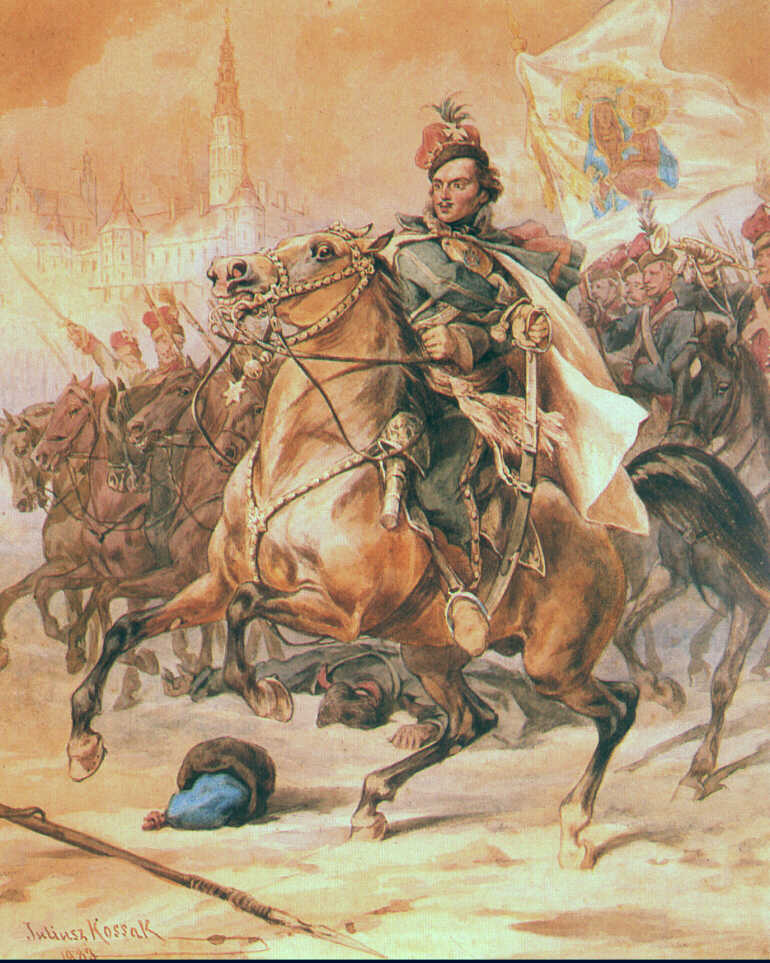
Kazimierz Pulaski near Częstochowa, 1883
watercolor, cardboard, 45 x 36,5 cm (in the light of the passe-partout);
signed lower left: Juliusz Kossak | 1883
And he hides something big under his head.
– “Probably from Germany, my son, you are carrying a bucket of amber?”
– “Not, my father is Laszka's daughter-in-law”.
watercolor, papier, 57,5 x 42,5 cm (in the light of the passe-partout)
signed lower left: Juliusz Kossak | 1898
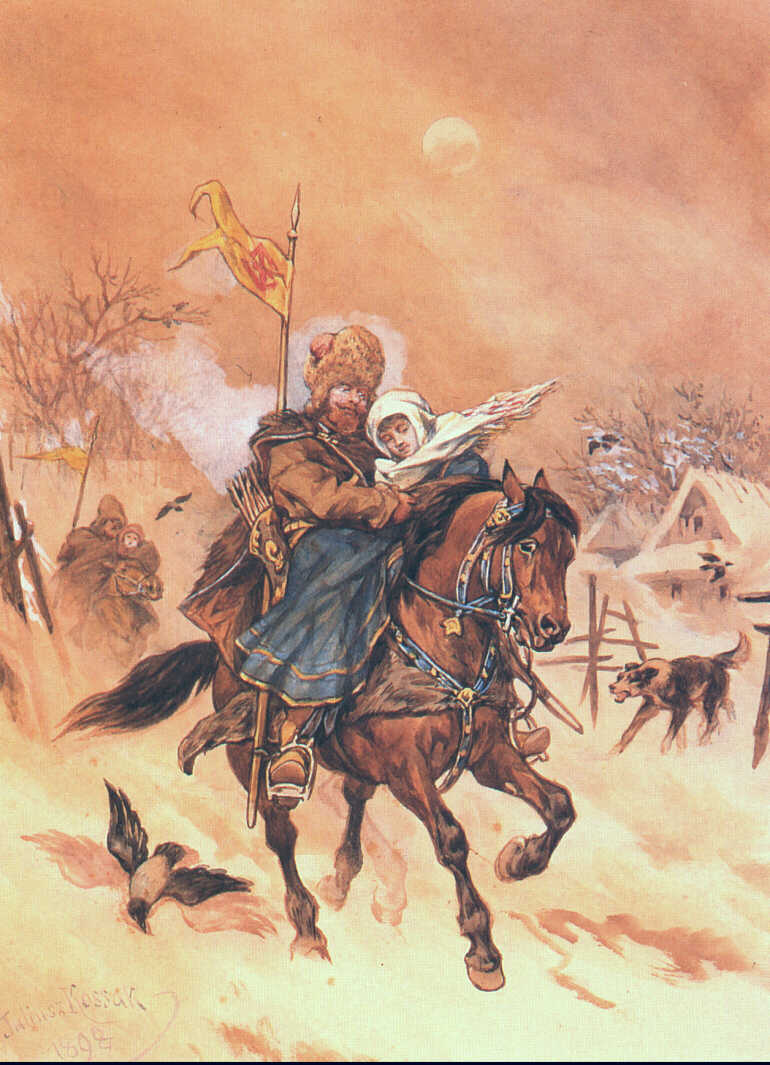
Oil painting shown After hunting, comes from the best, the mature period of Juliusz Kossak's work. The artist painted oil paintings only in the earlier period (Mohort presenting the stud, 1858), later he created similar multi-figure compositions in his favorite watercolor technique. The painting is distinguished by decorativeness and a play of vivid colors, and the form of the riders, the silhouettes of horses and dogs captured in perfectly observed movement are picturesquely grouped against the background of park greenery.
After hunting
oil, canvas, 65 x 90 cm;
signed lower right. Juliusz Kossak | 1879
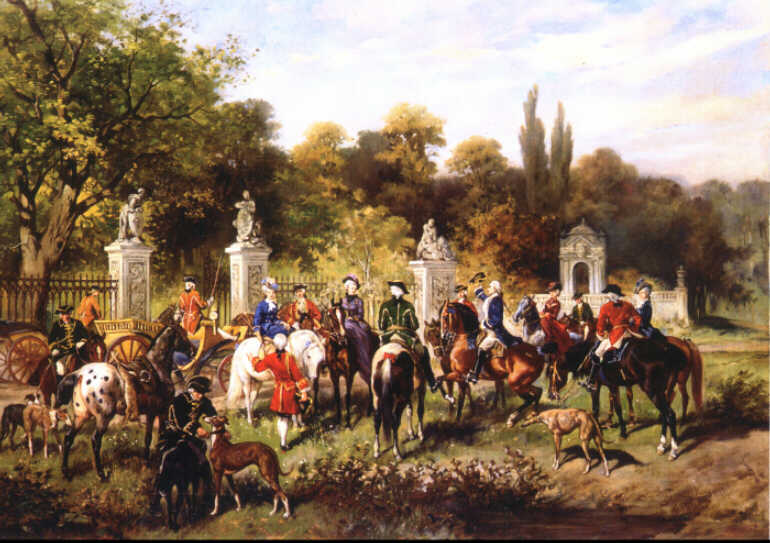
watercolor, 22 x 27,7 cm;
signed lower left. Juliusz Kossak 1857;
National Museum in Warsaw;
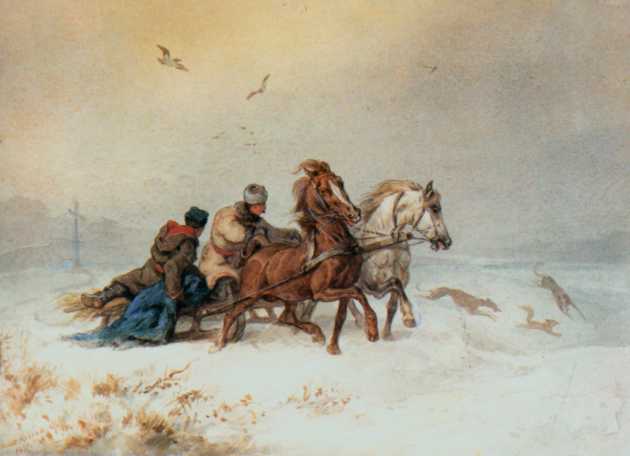
oil, canvas, 55 x 80,5 cm;
signed lower right. J. Kossak in Paris 1858;
National Museum in Warsaw;
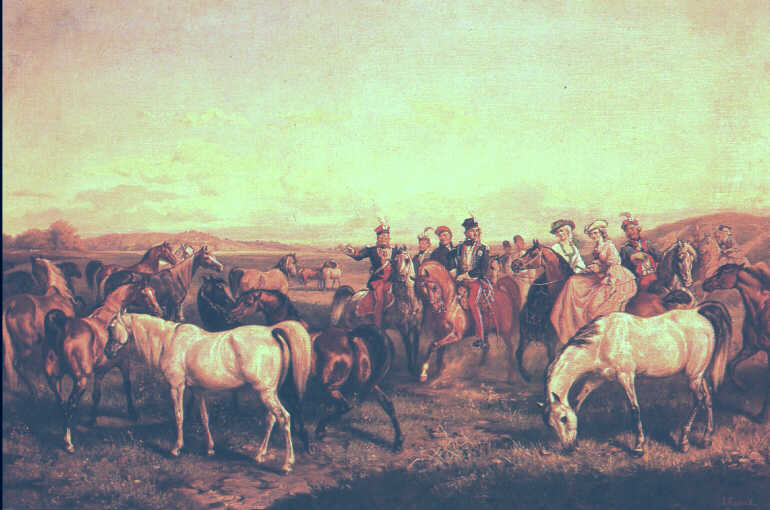
watercolor, 54,9 x 44,5 cm;
signed lower right. Juliusz Kossak 1858;
National Museum in Warsaw;
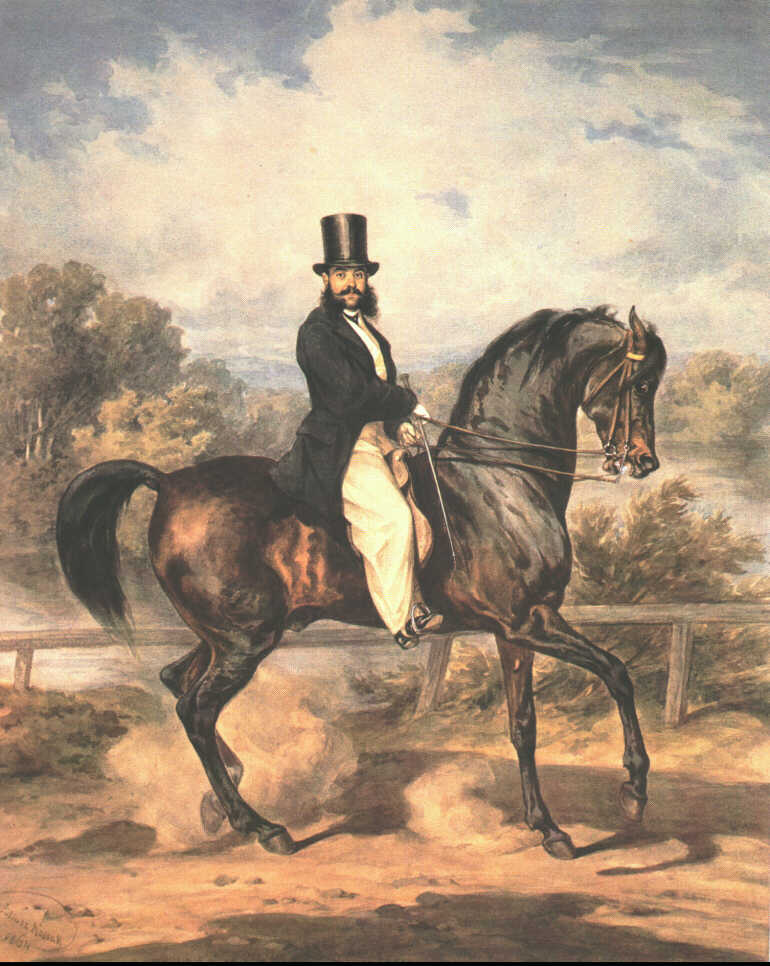
oil, canvas, 77,5 x 62 cm;
National Museum in Gdańsk;
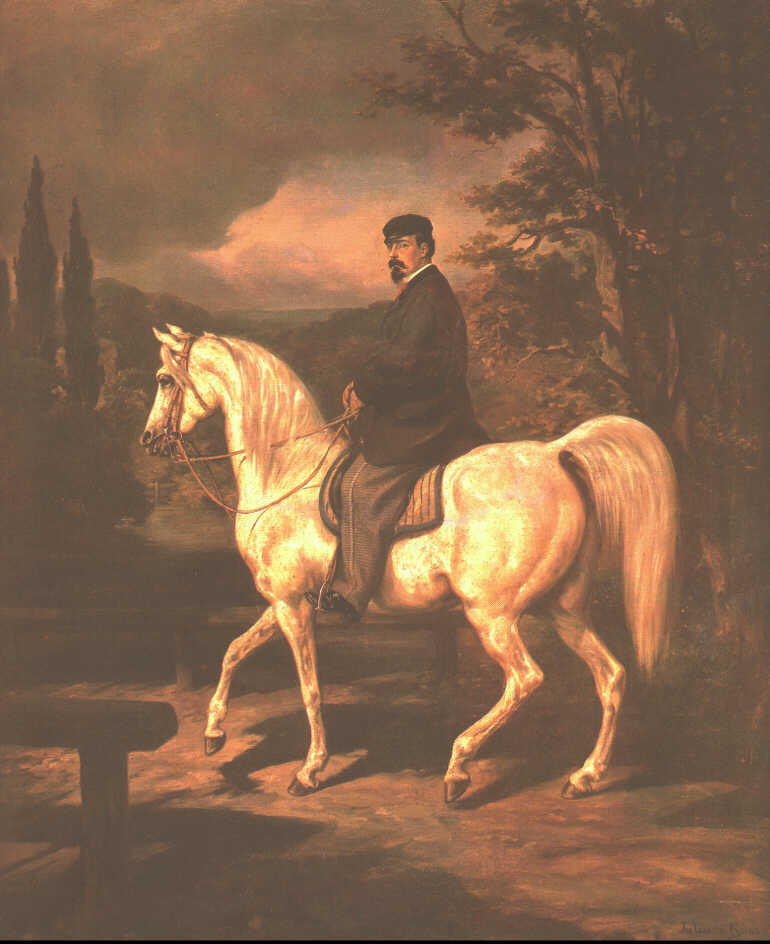
watercolor, 44,5 x 55,5 cm;
signed lower right. Juliusz Kossak;
National Museum in Wrocław;
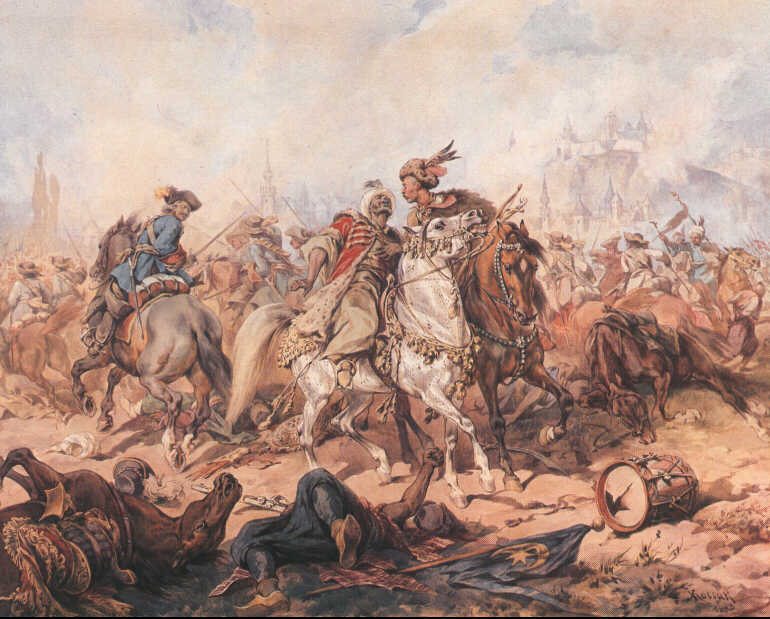
watercolor, 48 x 70,5 cm;
signed lower right. Juliusz Kossak 1883;
National Museum in Wrocław;
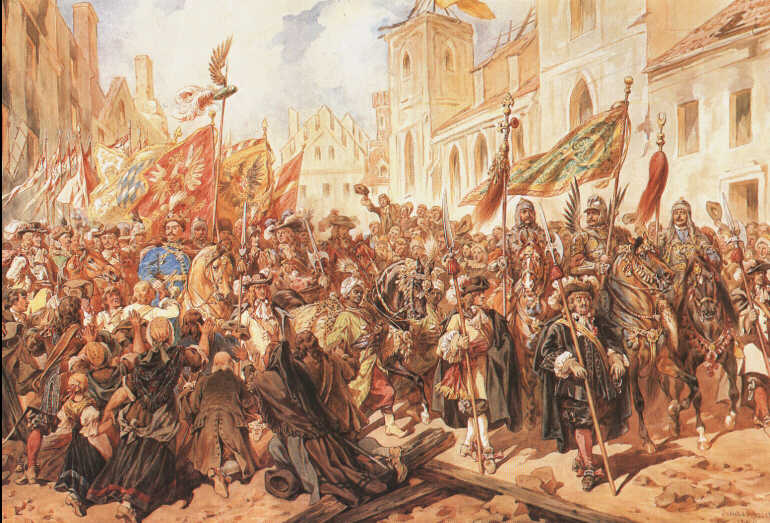
watercolor, 78 x 63 cm;
signed lower right. Juliusz Kossak 1879;
Museum in Łańcut;
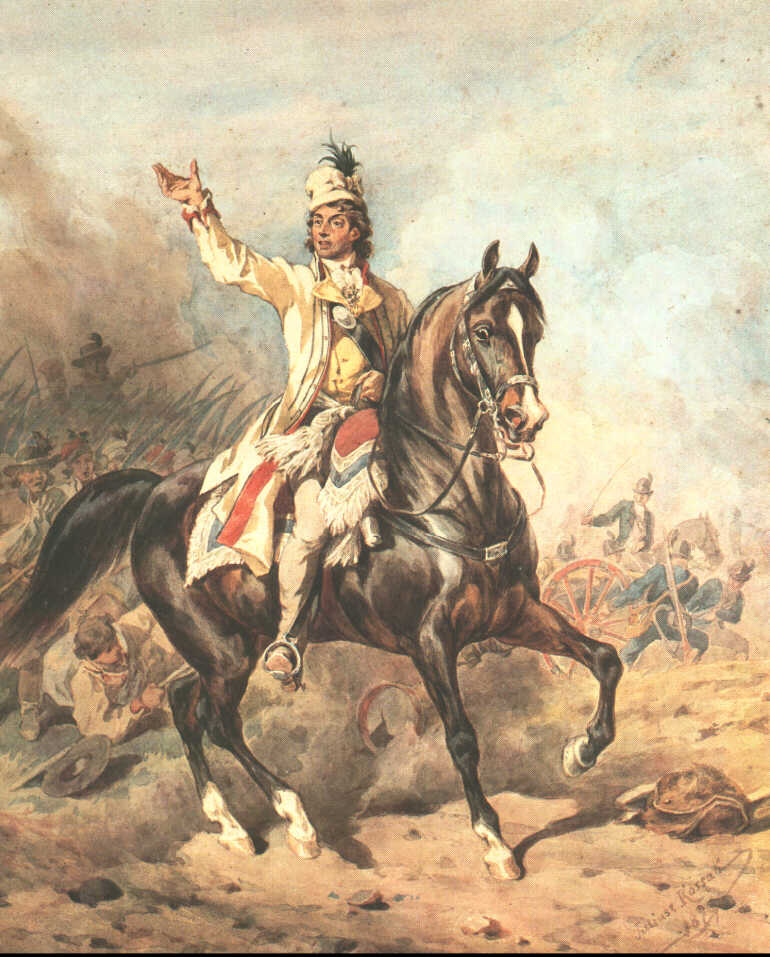
watercolor, 78 x 63 cm;
signed lower right. Juliusz Kossak 1879;
Museum in Łańcut;
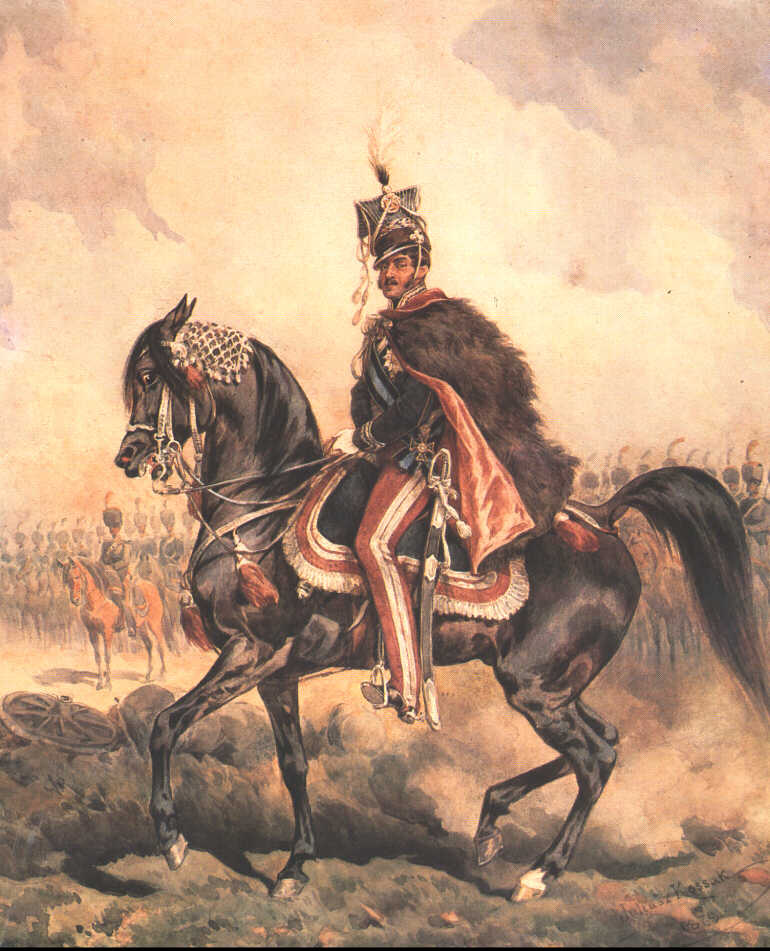
oil, canvas, 48,5 x 63,5 cm;
Lviv Picture Gallery;

watercolor, papier, 31,2 x 26,5 cm;
Lviv Picture Gallery;

